XMM-Newton News Archive 2011 - XMM-Newton
XMM-Newton News Archive - Year 2011
Back to News Archive.

Strangely slow pulsar discovered nestled in young supernova remnant
Astronomers have discovered a very slowly rotating X-ray pulsar still embedded in the remnant of the supernova that created it. This unusual object was detected on the outskirts of the Small Magellanic Cloud, a satellite galaxy of the Milky Way, using data from a number of telescopes, including ESA's XMM-Newton.
Further details on the ESA Science & Technology pages.
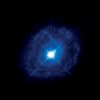
ESA spacecraft reveal new anatomy around a black hole
A fleet of spacecraft including ESA's XMM-Newton and Integral have shown unprecedented details close to a supermassive black hole. They reveal huge 'bullets' of gas being driven away from the 'gravitational monster'.
Further details on the ESA News Web site
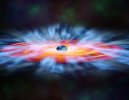
Space telescopes reveal secrets of turbulent black hole
Supermassive black holes at the hearts of active galaxies swallow large amounts of gas. During this feast they spill a lot of their 'food', which is discharged in turbulent outbursts. An international team of astronomers has revealed some striking features of such an outburst around a supermassive black hole in a distant galaxy.
Further details on the SRON Web site
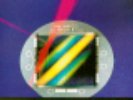
Citation landmarks for two high-energy papers
As of mid-September, there are 1000 citations for each of two papers published by the high-energy group at the Max Planck Institute for Extraterrestrial Physics: The paper describing EPIC pn instrument on board the XMM-Newton satellite and the ROSAT source catalogue.
Further details on the MPE Web site

XMM-Newton 11th Announcement of Opportunity (AO-11)
The XMM-Newton Eleventh Announcement of Opportunity is now open and observing proposals may be submitted.
The deadline is 7 October 2011, 12:00 UT
Further details here on our XMM-Newton SOC Website
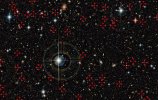
What activates a Supermassive Black Hole?
A new study combining data from ESO's Very Large Telescope and ESA's XMM-Newton X-ray space observatory has turned up a surprise. Most of the huge black holes in the centres of galaxies in the past 11 billion years were not turned on by mergers between galaxies, as had been previously thought.
Further details on the ESO Web site.
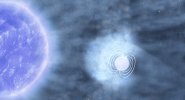
Neutron star caught feasting on clump of stellar matter
Astronomers using XMM-Newton have captured a neutron star undergoing a rare, intense flare, which may have been produced when the star ingested a massive clump of matter.
Further details on the ESA Science & Technology pages.
Neutron star bites off more than it can chew, ESA news
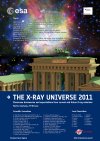
The X-ray Universe 2011 Symposium - Final announcement
Further details are given on the conference page.
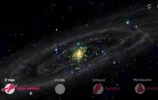
Andromeda's coat of many colours
ESA's fleet of space telescopes has captured the nearby Andromeda Galaxy, also known as M31, in different wavelengths. Most of these wavelengths are invisible to the eye and each shows a different aspect of the galaxy's nature.
Further details on the ESA News pages.
La galaxia Andrómeda se 'viste' de colores, El Mundo (in Spanish)
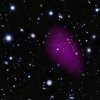
An old galaxy cluster discovered in the young Universe
Astronomers working with data from several observatories, including ESA's XMM-Newton, have discovered the most distant, mature galaxy cluster yet. The cluster is seen as it was when the Universe was only about a quarter of its current age.
Further details on the ESA Science & Technology pages.
Un batallón de telescopios descubre las galaxias maduras más distantes, ABC-Madrid (in Spanish)
Oldest Galaxy Cluster Looks Like Modern-Day Kin, Discovery News
Descubierto el más lejano cúmulo de galaxias, El País (in Spanish)
New-looking old galaxies, Nature
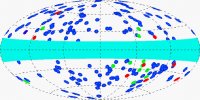
Planck's successful hunt probes galaxy clusters on very broad mass range
The first all-sky survey of galaxy clusters detected via the Sunyaev-Zel'dovich effect is amongst the highlights presented by the Planck Collaboration at a conference held in Paris, France. The survey has benefited from a fruitful collaboration with ESA's XMM-Newton observatory.
Further details on the ESA Science & Technology pages.
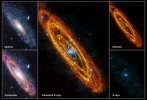
Andromeda's once and future stars
Two ESA observatories have combined forces to show the Andromeda Galaxy in a new light. Herschel sees rings of star formation in this, the most detailed image of the Andromeda Galaxy ever taken at infrared wavelengths, and XMM-Newton shows dying stars shining X-rays into space.
Further details on the ESA News portal

BBC's Stargazing Live
XMM-Newton participated in the BBC programme "Stargazing Live" on 4 Jan 2011, 20:00 UT.
Further details on the BBC portal
- Removed a total of (2) style text-align:center;








































 Sign in
Sign in
 Science & Technology
Science & Technology